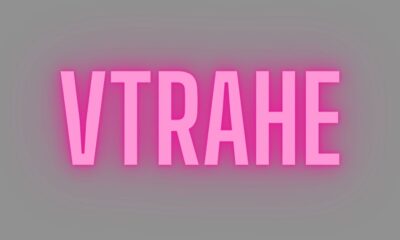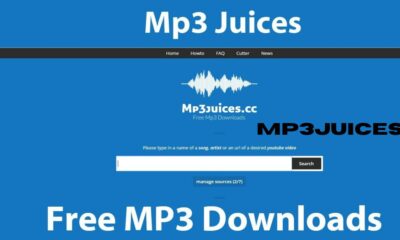Education
reader response journal middle school

A reader response journal in middle school is a tool used to help students actively engage with the texts they read. It encourages personal connections, critical thinking, and emotional reactions by allowing students to write their reflections and opinions in response to reading assignments. Unlike traditional book reports or comprehension quizzes, reader response journals are informal and focus on the student’s perspective rather than just right or wrong answers.
Students might write about what they liked or didn’t like in a story, make predictions, analyze characters, or relate the book to their own experiences. This personal connection deepens understanding and fosters a love for reading.
Why Reader Response Journals Matter for Middle School Students
Middle school is a crucial stage in literacy development. Students are transitioning from learning to read to reading to learn. Reader response journals support this transition by:
Encouraging deeper engagement with texts
Improving comprehension through personal reflection
Allowing freedom of thought and expression
Promoting empathy by connecting with characters
Helping teachers assess understanding beyond standard tests
When students feel their voice matters in interpreting literature, they become more motivated readers and more confident writers.
Key Elements of an Effective Reader Response Journal
To maximize the educational value of reader response journals, certain key elements should be included:
Consistent Entries: Journals should be maintained regularly to track progression and growth in reading comprehension.
Prompts and Questions: These guide students to think critically about the text and offer structure for their reflections.
Textual Evidence: Encouraging students to cite specific passages helps support their ideas and fosters analytical thinking.
Personal Connection: Students should be free to relate stories to their lives, which makes reading meaningful and memorable.
Creativity: Drawings, poems, alternate endings, and letters to characters can make journaling more enjoyable and engaging.
These components help middle schoolers explore literature with depth and confidence.
Best Prompts to Use in Reader Response Journals
To keep students interested and push their thinking, using varied and thought-provoking prompts is key. Here are some types of prompts that work well:
Prediction: What do you think will happen next and why?
Character Analysis: Which character do you relate to and why?
Theme Exploration: What is the central theme? How is it relevant to your life?
Author’s Purpose: Why do you think the author wrote this story?
Personal Reflection: Has this story ever happened to you or someone you know?
Conflict and Resolution: What was the main conflict, and how was it resolved?
Opinion-Based: Do you agree with the character’s decisions?
Changing prompts often keeps the activity fresh and stimulates varied critical thinking.
How Reader Response Journals Support Reading Comprehension
Comprehension goes beyond simply understanding the plot. Reader response journals help middle schoolers:
Process Events and Character Motivation: Writing reflections helps solidify narrative understanding.
Ask Questions: Students learn to ask questions that dig deeper into the meaning of the story.
Summarize Effectively: They practice summarizing scenes and chapters in their own words.
Recognize Literary Devices: Journals allow exploration of metaphors, foreshadowing, irony, and more.
Develop Opinions: Through journaling, students form and support their views with text evidence.
These skills build strong, active readers who can confidently engage with complex literature.
Incorporating Reader Response Journals into the Curriculum
Reader response journals can be easily embedded into existing lesson plans. Here’s how to make them work across various classroom structures:
Daily Bell Ringer: Begin class with a quick prompt that ties into reading homework.
Homework Assignment: Assign journal entries alongside chapter readings.
Group Discussions: Use journal responses to fuel peer conversations.
Assessment Tool: Grade journals based on effort, clarity, and connection rather than grammar or right/wrong answers.
Project Foundation: Use entries as a springboard for essays, book reports, or creative presentations.
When journals are used flexibly, they enhance the overall reading curriculum and meet diverse learner needs.
Examples of Reader Response Journal Entries
Seeing what a journal entry might look like can help both teachers and students understand expectations. Below are sample entries from a middle schooler reading The Outsiders by S.E. Hinton:
Prompt: How do you feel about the main character’s situation?
“I feel really sad for Ponyboy. He tries to do the right thing but people judge him because he’s a Greaser. I think everyone deserves a chance, no matter what they look like.”
Prompt: What did you notice about the author’s writing style?
“S.E. Hinton uses a lot of emotion and description. I like how she shows what the characters are feeling, not just what they’re doing.”
These examples reflect personal connection, insight, and basic literary analysis—all of which develop with practice.
Tips for Teachers Using Reader Response Journals
Implementing reader response journals effectively involves thoughtful planning and flexibility. Here are tips for educators:
Model Expectations: Show example entries and do a few as a class.
Keep It Low-Stress: Emphasize expression and engagement over perfection.
Offer Choice: Let students choose books or prompts to enhance ownership.
Use Rubrics: Create a simple rubric focusing on completeness, connection, and clarity.
Encourage Creativity: Accept drawings, comic strips, or songs as legitimate journal responses.
Celebrate Growth: Highlight how students’ entries evolve over time.
These strategies ensure journaling becomes a tool for discovery rather than a burden.
Adapting Reader Response Journals for Struggling Readers
Students with reading difficulties or learning differences can still benefit from journaling, with appropriate modifications:
Provide Sentence Starters: Help with structure to ease writing anxiety.
Use Graphic Organizers: Visual tools help students organize thoughts.
Allow Audio Responses: Let students record thoughts verbally if writing is a barrier.
Pair with Visuals: Use comic books or illustrated novels as journal prompts.
Give Extra Time: Avoid rushing reflective writing for students who need it.
With the right support, all learners can use journals to grow their reading skills.
Reader Response Journals and Social-Emotional Learning
Literature opens the door to discussions about emotions, relationships, and identity—topics central to social-emotional learning (SEL). Reader response journals encourage:
Self-Awareness: Students examine their feelings through character analysis.
Empathy: Reading diverse stories broadens perspective and understanding.
Decision-Making Skills: Reflecting on characters’ choices helps students evaluate their own.
Communication: Writing about feelings and experiences builds expressive skills.
Respect for Diversity: Exploring different cultures and experiences through books nurtures tolerance.
In this way, journals nurture not only stronger readers but kinder, more thoughtful individuals.
Using Technology to Enhance Reader Response Journaling
Digital tools can take journaling to the next level. Many middle school classrooms now use:
Google Docs or Slides: Allow sharing, commenting, and teacher feedback.
Seesaw or Flipgrid: Video journals help auditory learners express ideas.
Blogs or Class Websites: Publish journal entries as posts for class discussion.
Typing Templates: Offer prompts in interactive PDF or document form for easy access.
Technology makes journaling more accessible, organized, and engaging, especially for tech-savvy students.
Encouraging Parental Involvement
Parents play a vital role in fostering a reading habit. Reader response journals offer a unique opportunity to involve them in their child’s learning journey:
Share Prompts at Home: Send questions for dinner-table discussion.
Invite Reflections: Encourage parents to write short notes or reactions in the journal.
Showcase Growth: Let students present their favorite entries during parent-teacher conferences.
Book Recommendations: Parents can suggest books they loved as children for students to read and respond to.
Family engagement boosts student motivation and strengthens the home-school connection.
Common Mistakes to Avoid When Using Reader Response Journals
While effective, journaling can backfire if implemented poorly. Avoid these pitfalls:
Over-Grading: Focusing too much on grammar discourages honest expression.
Too Much Structure: Rigid formats kill creativity and personal voice.
Ignoring Entries: Failing to read or comment on journals reduces student motivation.
Lack of Variety: Using the same prompt repeatedly makes journaling feel like a chore.
Inconsistent Use: Sporadic journaling doesn’t produce meaningful growth.
Avoiding these missteps ensures the journal remains a powerful learning tool.
Conclusion
Reader response journals in middle school are more than just a writing activity—they’re a gateway to deeper comprehension, personal growth, and a lifelong love of literature. By giving students the space to reflect, react, and relate, these journals help them transform reading from a passive act into an active exploration.
From supporting social-emotional learning to boosting literacy skills and encouraging creativity, reader response journals serve as one of the most versatile tools in a middle school teacher’s toolbox. With the right prompts, support, and flexibility, they become a cornerstone of effective, student-centered reading instruction.
ALSO READ:Understanding the “Current Influencer” NYT Crossword Clue
Frequently Asked Questions
What is the purpose of a reader response journal?
The purpose is to help students reflect on their reading, express their thoughts, and deepen comprehension through personal connection.
How often should students write in a reader response journal?
Ideally, students should write two to three times per week, depending on reading load and class goals.
Do reader response journals replace tests or book reports?
Not necessarily. They complement other assessments by showing a student’s personal engagement and critical thinking.
Can reader response journals be digital?
Yes. Many schools use Google Docs, blogging platforms, or educational apps for digital journaling.
What age is best for starting reader response journals?
While great for middle school, students as young as 3rd grade can benefit, with age-appropriate guidance.
How long should a journal entry be?
Length varies, but one well-developed paragraph (5–7 sentences) is a good starting point for middle schoolers.
Do students need to use quotes in their entries?
It’s encouraged, especially as students grow. Using quotes helps them support their opinions with text evidence.
Education
What Is Annas Archives and Why Does It Matter in 2025?
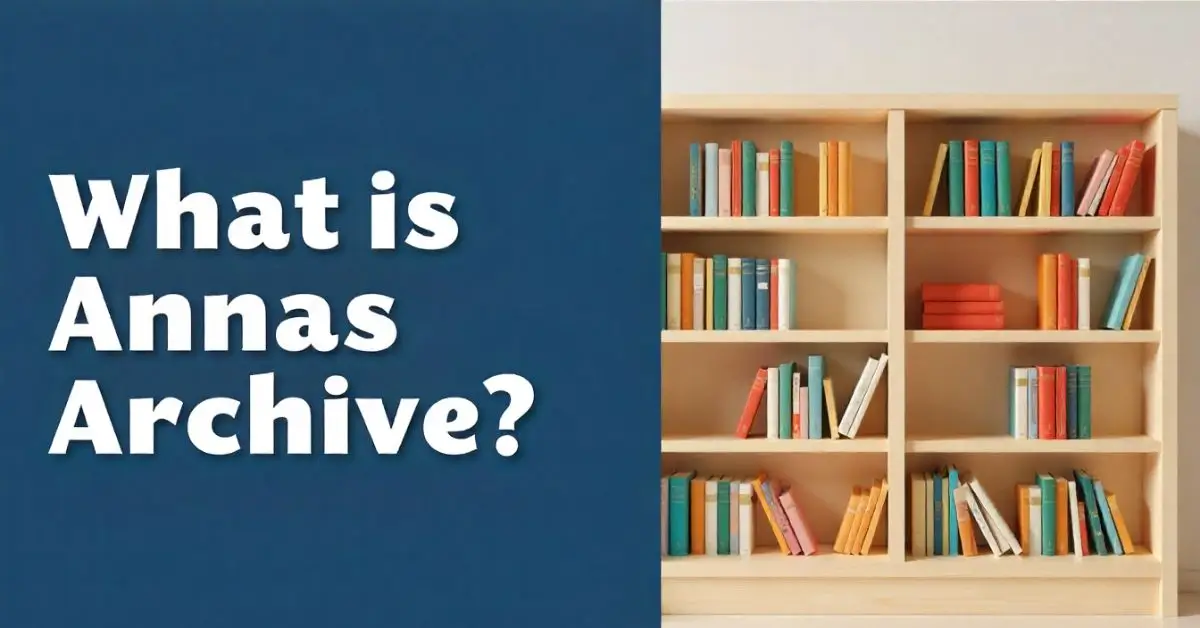
Annas Archives has become one of the most discussed digital libraries in recent years. Designed as a global index of free academic and literary resources, it serves millions of readers, students, and researchers seeking open access to knowledge. In this guide, we’ll explore what Annas Archive is, how it operates, its benefits and controversies, and why it continues to shape digital archiving in 2025.
Quick Answer
Annas Archives is a free, open-source project that indexes data from major shadow libraries like Library Genesis and Sci-Hub. It allows users to search for books, research papers, and documents globally. Its goal is to preserve human knowledge and ensure long-term access to information.
Introduction: A Revolution in Digital Preservation
In an era dominated by paywalls and subscription-based platforms, Annas Archives stands as a defiant yet visionary project. It aims to preserve and make accessible the world’s accumulated knowledge, regardless of economic or political barriers. Founded by anonymous digital archivists, the platform collects and mirrors data from various open sources, ensuring that even if one source disappears, the knowledge remains safe.
According to several open-access advocates, digital preservation has never been more critical. Universities and institutions often lock valuable content behind paywalls, limiting access to only those who can afford it. Annas Archive challenges that by maintaining a decentralized repository that anyone can search.
Understanding the Core Concept Behind Annas Archives
At its core, Annas Archive functions as a meta-search engine for books, research articles, and digital documents. Rather than hosting files directly, it indexes multiple databases and archives. This means users can search across several sources at once, simplifying access to academic and literary materials.
The idea mirrors what the Internet Archive once did for websites and cultural media. However, Annas Archive extends its reach to cover books, papers, magazines, and even scientific data. The project emphasizes redundancy — ensuring that no single point of failure can erase large sections of humanity’s knowledge base.
Key Goals of Annas Archives
- Universal Access – Making academic and cultural works freely available.
- Long-Term Preservation – Ensuring that data remains available even if original sources vanish.
- Transparency – Keeping the entire codebase open source for verification and contribution.
- Decentralization – Avoiding dependency on centralized systems or single domains.
How Annas Archives Works: The Technology and Structure
Technically, Annas Archive is built on a combination of data scraping, mirroring, and distributed hosting. It does not store copyrighted material directly. Instead, it serves as a bridge — connecting users to open repositories.
The platform integrates multiple databases such as:
- Library Genesis (LibGen) – Academic and fiction books.
- Sci-Hub mirrors – Research papers and journals.
- Z-Library – General literature and textbooks.
- Open directories – Publicly available metadata archives.
By merging these sources, Annas Archive provides a unified search interface. Users can search by author, title, ISBN, or DOI — similar to professional research databases.
“Our mission is to preserve knowledge for future generations. We believe access to information should not depend on geography or wealth,” says an anonymous contributor from the Annas Archive team.
Why Annas Archives Became So Popular
The popularity of Annas Archive can be attributed to a few key factors — accessibility, transparency, and a sense of digital resistance.
For many, the site represents a democratization of education. Students in developing countries often lack access to expensive journals and books. Through Annas Archive, they can explore materials freely. Additionally, the open-source nature builds trust — anyone can audit or mirror the platform.
Social media platforms like Reddit and X (formerly Twitter) have also amplified its presence. Scholars share links, educators recommend it for research, and readers discuss rare book discoveries.
Major Advantages
- Free access to millions of books and papers.
- Cross-platform search through multiple archives.
- Permanent backups to prevent data loss.
- Community-driven development and maintenance.
- Ethical debates that inspire awareness of access inequality.
Ethical and Legal Considerations
While Annas Archive operates under the banner of open knowledge, it also walks a fine ethical line. Critics argue that hosting or linking copyrighted materials without consent violates intellectual property laws. Supporters counter that it’s a moral duty to preserve and share knowledge that otherwise remains locked behind corporate barriers.
Digital ethics experts like Dr. Elena Harris note that,
“Projects like Annas Archive force us to question the balance between intellectual property rights and the human right to information.”
In response, Annas Archive’s team emphasizes transparency — it does not host files but rather catalogs metadata and existing mirrors. This approach attempts to reduce legal exposure while maximizing accessibility.
Annas Archives vs Other Knowledge Repositories
Let’s see how Annas Archive compares with traditional and alternative repositories in 2025.
| Feature | Annas Archive | Internet Archive | Google Books | ResearchGate | Sci-Hub |
|---|---|---|---|---|---|
| Cost | Free | Free | Limited free access | Free (with signup) | Free |
| Ease of Use | Moderate | Easy | High | Medium | Medium |
| Content Type | Books, papers, metadata | Web, books, media | Books & snippets | Research papers | Research papers |
| Accessibility | Global mirrors | Centralized servers | Region-restricted | Member-based | Variable |
| Performance | Fast (depends on mirrors) | Moderate | High | Moderate | Fast |
This table highlights that while Annas Archive isn’t always the most polished, it’s among the most comprehensive and resilient. Its decentralized structure gives it an edge in long-term survival.
The Cultural Impact of Annas Archives
Beyond the technical aspects, Annas Archive represents a broader cultural movement — one advocating for open knowledge and digital equality. The project has inspired conversations across academia, journalism, and even policy circles.
For students and researchers in countries with limited access to paid journals, it acts as a lifeline. It’s not just about free books — it’s about bridging educational gaps globally. By mirroring knowledge, it creates resilience against censorship, data loss, and monopolization.
Experts compare its impact to the early open-source software movement, where communities collectively built resources that benefited humanity without profit motives.
How to Use Annas Archive Safely and Effectively
While using Annas Archive is relatively simple, understanding safe access practices is crucial.
Step-by-Step Guide
- Search by ISBN or Title: Enter the exact title or code in the search bar.
- Check Metadata: Verify edition, author, and year to ensure accuracy.
- Use Trusted Mirrors: Access through secure mirror links to avoid fake sites.
- Download Responsibly: Prefer public-domain or open-license materials.
- Verify Integrity: Cross-check files using digital hashes when possible.
Tips for Efficient Use
- Bookmark reliable mirrors and metadata sources.
- Combine searches with Google Scholar for academic precision.
- Use a VPN if your region restricts access to open archives.
These steps ensure both accessibility and safety, aligning with responsible digital archiving practices.
The Role of Open Source in Annas Archive’s Development
Open source plays a vital role in maintaining Annas Archive’s credibility. Its codebase is publicly available, allowing developers to contribute improvements, fix bugs, and verify data integrity.
The project’s transparency has attracted contributions from digital archivists, software engineers, and even librarians. Open collaboration helps sustain and scale the project — ensuring it’s not dependent on a single entity.
“Transparency breeds trust. Open data projects like Annas Archive thrive because the community ensures their survival,” notes digital historian Michael Dean.
The Controversy and Censorship Battles
Annas Archive has faced numerous takedowns, domain seizures, and blocking attempts from governments and copyright agencies. Each time, it reemerges through new mirrors and decentralized networks.
These constant battles illustrate the tension between information freedom and intellectual property control. For many advocates, the persistence of Annas Archive symbolizes the unstoppable nature of knowledge sharing in the digital age.
Despite controversies, the site’s community remains committed to its preservation mission, often viewing these challenges as proof of its necessity.
EXPERT ANSWERS
1. Is Annas Archive legal to use?
Annas Archive operates in a legal gray area. It doesn’t host copyrighted files directly but indexes data from third-party sources. Legality depends on your region and how you use the platform.
2. Is Annas Archive safe?
Yes, when accessed via official mirrors or reputable domains. Users should avoid downloading from unknown or suspicious links.
3. What type of books are available on Annas Archive?
It includes textbooks, academic papers, research journals, fiction, and reference works sourced from open or mirrored databases.
4. Why was Annas Archive created?
It was created to preserve digital knowledge, inspired by earlier projects like Library Genesis and Sci-Hub, aiming to provide permanent access to global information.
5. Who runs Annas Archive?
The project is maintained by an anonymous team of open-access activists and volunteer developers dedicated to digital preservation.
The Broader Movement: Knowledge Without Borders
Annas Archive is part of a larger knowledge liberation movement, alongside efforts like Project Gutenberg, the Internet Archive, and Wikipedia. Together, these projects promote decentralized, community-driven access to education and culture.
While critics argue about legality, supporters highlight the moral argument: information should serve humanity, not be confined by profit barriers. The real value lies not in ownership but in preservation and dissemination.
The Future of Annas Archive and Digital Libraries
Looking ahead, Annas Archive may evolve into something far greater than a simple index. Developers are exploring ways to integrate blockchain-based archiving, decentralized file storage (like IPFS), and AI-driven metadata cleaning.
These innovations could make data preservation permanent, tamper-proof, and universally searchable — the ultimate goal of the digital preservation community.
As universities and governments increasingly digitize their archives, open projects like Annas Archive remind us of the need for public oversight and free access to humanity’s collective memory.
Expert Insight: The Balance Between Rights and Access
The debate surrounding Annas Archive reflects a long-standing tension. According to intellectual property researcher Dr. Naomi Clarke,
“We must rethink access laws for the digital age. Restricting knowledge is no longer practical — it’s counterproductive to innovation.”
Her statement captures the essence of why Annas Archive resonates with millions. It’s not about rebellion; it’s about adaptation — adjusting old laws to new realities.
Annas Archive and Educational Equity
From an educational perspective, Annas Archive offers unprecedented opportunities. In many developing nations, students depend on such resources for their academic survival. The archive levels the playing field — enabling anyone with an internet connection to access world-class materials.
Educators, librarians, and researchers increasingly recognize its potential in fostering inclusive education. It supports the United Nations’ Sustainable Development Goal 4 — ensuring inclusive and equitable quality education for all.
Challenges and Sustainability
Despite its success, Annas Archive faces ongoing challenges:
- Funding: It relies on community donations and volunteer work.
- Censorship: Frequent domain takedowns disrupt continuity.
- Data Integrity: Constant verification is needed to avoid corrupted or false data.
- Public Perception: Balancing legality with moral legitimacy remains difficult.
However, its community-driven structure and global support have kept it resilient, even under immense pressure.
Annas Archive in the Context of 2025
In 2025, as AI-driven publishing and subscription models dominate, Annas Archive stands as a reminder that knowledge must remain a public good. The project bridges the digital divide and symbolizes resistance to monopolized information economies.
Its relevance continues to grow as the cost of education increases. The world is moving toward open data ecosystems, and Annas Archive is leading that transformation.
Conclusion:
At the heart of today’s information era, Annas Archive stands as both a technical marvel and a cultural statement. It challenges the boundaries of access, copyright, and digital preservation. While it may face legal and ethical scrutiny, its mission — to safeguard global knowledge for all — is undeniably noble.
By merging technology, community effort, and moral conviction, it has changed how we view digital libraries. The lesson is clear: knowledge thrives when shared.
As we move further into 2025, Annas Archive reminds us that preserving and democratizing knowledge is not just a digital act — it’s a human responsibility.
FAQ’s
1. Can I donate to support Annas Archive?
Yes, many users contribute anonymously to support hosting and development costs, helping sustain global access.
2. Does Annas Archive have mobile access?
Yes, it’s mobile-friendly and optimized for lightweight browsing, though mirror performance may vary by region.
3. Are the books on Annas Archive accurate and verified?
The archive indexes metadata from reputable sources, but users should cross-verify editions for academic accuracy.
4. What makes Annas Archive different from Library Genesis?
While Library Genesis hosts content directly, Annas Archive functions as an index that connects multiple databases.
5. Can educational institutions legally use Annas Archive?
Institutions typically avoid direct integration due to copyright concerns, but many educators use it informally for research support.
6. Will Annas Archive continue to exist in the future?
Given its decentralized nature and community support, it’s expected to adapt and persist despite regulatory challenges.
Education
What Is an It Wordsearch and Why Does It Matter?
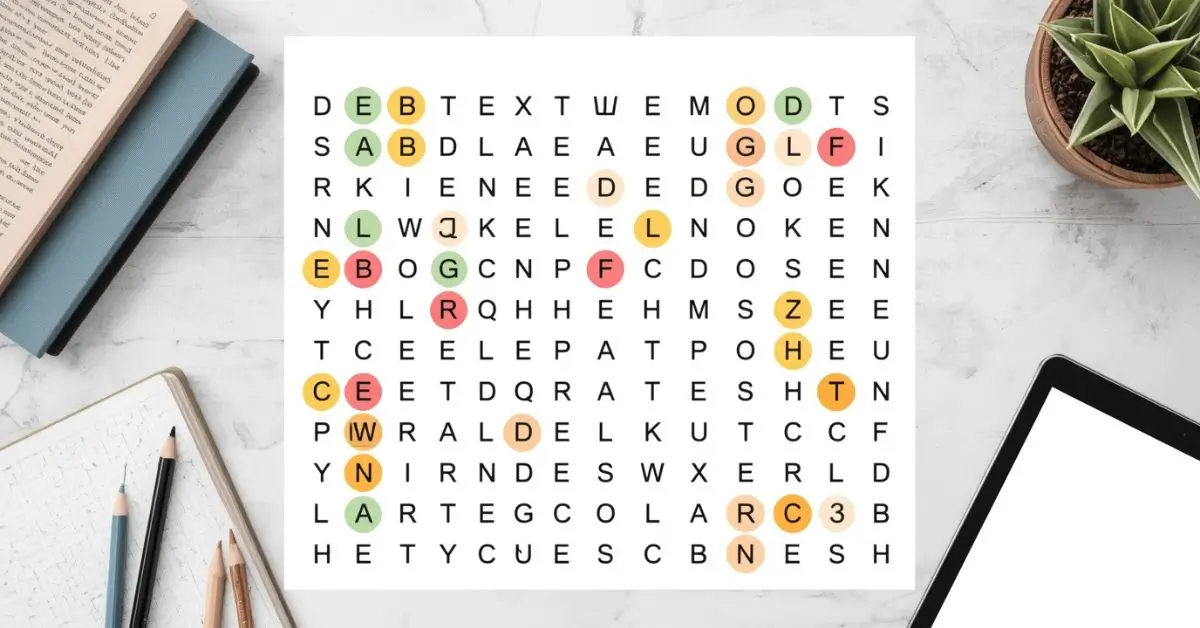
When people hear the term it wordsearch, they usually think of a simple puzzle filled with hidden words. But in today’s world of digital learning, team-building, and brain training, an it wordsearch is much more than just a pastime. It blends entertainment with problem-solving, boosts memory, and can even serve as a tool for professional development or classroom engagement.
This article explores what an it wordsearch is, how it works, its benefits, different uses, comparisons with other puzzle formats, and practical tips to get the most out of it. Whether you are a teacher, a parent, a student, or just someone who enjoys puzzles, you will find this guide both helpful and easy to follow.
Quick Answer
An it wordsearch is a puzzle activity where players locate hidden words in a grid of letters. It enhances focus, vocabulary, and problem-solving skills while serving as both entertainment and a mental exercise.
Understanding the Concept of It Wordsearch
An it wordsearch puzzle consists of a grid filled with random letters where meaningful words are hidden horizontally, vertically, diagonally, or even backward. The player’s task is to scan the grid, identify the words from a provided list, and highlight them.
Unlike crosswords, which require clues and definitions, wordsearch puzzles provide direct word lists. This makes them accessible to learners of all ages. Industry experts in education note that puzzles like these build pattern recognition, attention to detail, and persistence.
“Word puzzles train the brain in pattern recognition and visual scanning, which are essential cognitive skills for both children and adults,” says a cognitive learning specialist.
Why It Wordsearch Remains Popular
Despite the rise of digital games, the it wordsearch has retained its popularity for decades. It requires minimal preparation, no advanced rules, and offers immediate satisfaction when words are found. Teachers often incorporate them into lessons, and companies use them for icebreakers.
Another reason for its popularity is adaptability. You can design a wordsearch around nearly any theme: technology, health, geography, or even professional training topics. This flexibility allows it to stay relevant across industries and age groups.
Key Benefits of Using an It Wordsearch
Improves Vocabulary and Spelling
By scanning words repeatedly, learners absorb new vocabulary, improve spelling accuracy, and strengthen memory.
Enhances Focus and Concentration
Searching for words amidst clutter demands sharp attention. This consistent training improves focus in academic and workplace settings.
Reduces Stress
Much like meditation, solving a wordsearch engages the brain in a calming, repetitive task, lowering stress levels.
Encourages Team-Building
In group activities, an it wordsearch can be turned into a competitive or cooperative game, encouraging communication and collaboration.
How It Wordsearch Compares With Other Puzzle Types
To highlight its value, here is a comparison table showing how an it wordsearch stacks against other puzzles:
| Feature | It Wordsearch | Crossword Puzzle | Sudoku | Jigsaw Puzzle | Trivia Quiz |
|---|---|---|---|---|---|
| Cost | Free or low | Free or low | Free | Moderate | Free or low |
| Efficiency | Quick setup | Requires clues | Logical effort | Time-consuming | Depends on questions |
| Ease of Use | Very easy | Moderate | Moderate | Moderate to hard | Varies |
| Accessibility | All ages | Teens & adults | Teens & adults | All ages | Teens & adults |
| Performance Impact | Boosts focus & vocabulary | Boosts knowledge | Boosts logic | Boosts creativity | Boosts memory |
This shows that while other puzzles focus on logic, knowledge, or creativity, an it wordsearch strikes a balance between accessibility, fun, and skill-building.
Practical Uses of It Wordsearch
In Classrooms
Teachers create themed wordsearch puzzles to introduce new topics or reinforce vocabulary. For instance, a science teacher might design one using terms like “photosynthesis,” “ecosystem,” and “atom.”
In Workplaces
HR teams often use wordsearch puzzles during orientations or workshops as icebreakers. It sets a relaxed tone and encourages participation.
For Mental Health
Therapists sometimes recommend puzzles as part of stress management programs. An it wordsearch provides both focus and relaxation.
For Personal Growth
Individuals can use puzzles to learn new languages, practice spelling, or even prepare for exams by embedding technical terms into wordsearch grids.
Best Practices for Creating an Engaging It Wordsearch
- Choose a Theme: Align the puzzle with the subject—holidays, careers, sports, or health.
- Balance Word Difficulty: Include both simple and complex words to suit different learners.
- Keep Grid Size Manageable: A grid too large can overwhelm; a grid too small may be too easy.
- Incorporate Fun Layouts: Words hidden diagonally or backward add excitement.
- Make It Visual: Highlight solutions with bold or colored markers for easy review.
Industry best practices suggest that themed puzzles enhance retention because learners associate new terms with an engaging activity.
Digital Transformation of It Wordsearch
The puzzle has successfully transitioned into digital formats. Online platforms, apps, and printable worksheets make it more accessible than ever. Digital tools often include features like automatic scoring, hints, and multiplayer modes.
Performance studies show that digital wordsearch apps improve engagement because users can track progress instantly. However, traditional paper-based puzzles remain popular for their tactile and distraction-free nature.
Common Challenges in Solving It Wordsearch
While straightforward, wordsearch puzzles can still present challenges:
- Hidden Diagonal Words: Harder to spot without careful scanning.
- Similar Letter Patterns: Words like “cat” and “cart” can confuse players.
- Large Grids: May overwhelm beginners.
- Time Limits: In competitive settings, the pressure can reduce enjoyment.
These challenges are not flaws but features that make the puzzle engaging. Overcoming them strengthens resilience and persistence.
EXPERTS ANSWERS
Q1: What skills does an it wordsearch improve?
An it wordsearch improves vocabulary, concentration, problem-solving, and memory retention.
Q2: Is an it wordsearch good for children?
Yes, it is excellent for children because it teaches new words, sharpens spelling, and enhances focus in a fun way.
Q3: Can an it wordsearch be used in professional training?
Absolutely. Many organizations use them in workshops to teach technical terms or encourage team-building.
Q4: How is an it wordsearch different from a crossword?
Unlike a crossword that relies on clues, a wordsearch provides the list of words directly, making it easier and more accessible.
Q5: Are digital it wordsearch puzzles better than paper ones?
Both have advantages: digital versions add interactivity, while paper versions promote calm, screen-free engagement.
Tips to Solve an It Wordsearch Quickly
- Scan in Lines: Move horizontally and vertically to spot patterns.
- Look for Uncommon Letters: Letters like Q, Z, or X often stand out in grids.
- Circle Small Words First: Shorter words build momentum and confidence.
- Use a Highlighter: Visually marking helps track progress.
- Practice Regularly: Familiarity increases speed and accuracy.
Advanced Variations of It Wordsearch
Educators and puzzle enthusiasts often create advanced versions for added challenge:
- Themed Wordsearches: Holidays, seasons, or cultural events.
- Double Wordsearches: Two lists hidden in the same grid.
- Blank Wordsearches: Players must guess the theme without a word list.
- Puzzle Hunts: Wordsearches combined with riddles or trivia for deeper engagement.
These variations make the it wordsearch flexible enough for different learning styles and entertainment needs.
Conclusion:
At the start of this article, we defined what an it wordsearch is and why it remains significant. After exploring its benefits, uses, and digital evolution, one thing is clear: this puzzle is more than just a pastime. It is an educational, recreational, and professional tool that continues to evolve with modern needs.
By improving focus, enhancing vocabulary, and promoting relaxation, it has become a valuable resource in schools, workplaces, and homes. Whether solved on paper or on an app, the it wordsearch remains an accessible and effective way to blend fun with learning.
FAQ’s
What is the main purpose of an it wordsearch?
The main purpose is to engage users in finding hidden words, boosting vocabulary, focus, and problem-solving skills.
How long does it take to solve an it wordsearch?
Time varies depending on grid size and difficulty, but most puzzles take 5–20 minutes.
Can adults benefit from an it wordsearch?
Yes, adults benefit greatly. It helps reduce stress, sharpen focus, and strengthen memory.
What materials are needed for a paper wordsearch?
You only need a printed grid, a pen, and optionally a highlighter to mark found words.
Is it wordsearch considered a brain exercise?
Yes, it qualifies as a brain exercise because it stimulates pattern recognition, concentration, and memory.
Can I create my own it wordsearch?
Absolutely. Many free and paid tools allow you to create customized puzzles with your own word lists.
Education
What is CHST and Why Does It Matter?

CHST has become a highly recognized certification in the world of construction and occupational safety. For professionals who want to establish credibility, advance in their careers, and showcase their knowledge of safety standards, this certification holds significant weight. In this detailed guide, we will explore what CHST means, why it matters, how to prepare for it, and what benefits it brings to individuals and organizations.
What is CHST?
The Construction Health and Safety Technician (CHST) certification is a professional credential awarded to individuals who demonstrate expertise in safety practices for construction sites. It is designed for those who work in roles where safety management is a central responsibility.
Unlike general safety programs, CHST focuses on the unique hazards and regulatory frameworks in the construction industry. This makes it particularly valuable for site safety coordinators, supervisors, and inspectors.
Why CHST Certification Matters
Achieving the CHST certification is not just about passing a test. It’s about building trust and demonstrating competence in safety leadership. Employers often view certified individuals as more reliable, knowledgeable, and prepared to handle workplace risks.
Additionally, having CHST can open doors to better opportunities and higher salaries. It shows a commitment to professional growth, which is especially important in industries where safety compliance is directly tied to reputation and financial stability.
Eligibility and Requirements
Before pursuing CHST, it is important to understand the basic requirements:
- Experience: Typically, applicants need a set number of years working in construction safety.
- Education: A high school diploma or equivalent is required.
- Documentation: Proof of safety-related job duties must be provided.
These requirements ensure that candidates already have foundational experience before sitting for the exam.
Preparing for the CHST Exam
Preparation is key for success. The CHST exam covers a wide range of topics, including regulatory standards, hazard controls, and risk management. To succeed, candidates should focus on:
- Reviewing construction safety manuals
- Practicing sample questions
- Joining study groups or workshops
- Using digital flashcards for quick revision
Industry experts often advise breaking study sessions into small, focused blocks of time to improve retention.
CHST Exam Structure
The exam consists of multiple-choice questions that assess both knowledge and application. Candidates are tested on their ability to interpret safety regulations, identify hazards, and recommend corrective measures.
The time limit is designed to challenge not just knowledge but also decision-making under pressure. Success requires both preparation and confidence.
Benefits of Earning CHST
Professionals who hold the CHST certification enjoy a range of advantages:
- Higher credibility in the workplace
- Eligibility for advanced roles in safety management
- Better salary prospects
- Enhanced ability to influence safety culture
- Recognition from peers and industry leaders
One construction safety director once said, “Having CHST is like carrying a badge of trust—it proves you can protect both people and projects.”
Challenges and How to Overcome Them
Preparing for CHST can feel overwhelming because of the vast scope of topics. Common challenges include:
- Difficulty managing study time
- Limited access to study materials
- Anxiety during exams
To overcome these, candidates should set a clear study schedule, access reliable resources, and practice mindfulness techniques to stay calm during the exam.
Comparison Table: CHST vs. Other Safety Certifications
| Feature | CHST (Construction Health and Safety Technician) | ASP (Associate Safety Professional) | CSP (Certified Safety Professional) | OSHA 30-Hour Card | GSP (Graduate Safety Practitioner) |
|---|---|---|---|---|---|
| Focus Area | Construction-specific safety | General safety knowledge | Advanced safety expertise | Basic compliance | Entry-level safety recognition |
| Cost | Moderate | Higher | Higher | Low | Varies |
| Ease of Use | Practical, role-specific | Broad but requires more study | Challenging and advanced | Simple training | Dependent on degree program |
| Industry Recognition | High in construction | High across industries | Very high | Moderate | Moderate |
| Career Growth | Strong opportunities in construction | Broad opportunities | Top-level advancement | Limited | Foundation for future exams |
This table shows how CHST compares to other well-known certifications in terms of cost, focus, and career potential.
Career Opportunities After CHST
After obtaining the certification, professionals can pursue roles such as:
- Construction Site Safety Manager
- Health and Safety Coordinator
- Safety Compliance Officer
- Risk Management Specialist
- Project Safety Consultant
Each of these roles requires a strong understanding of both compliance and practical on-site safety.
The Role of CHST in Workplace Safety Culture
Workplace safety culture is not built overnight. CHST professionals play a key role in shaping it by:
- Identifying unsafe practices
- Training workers on compliance standards
- Leading safety drills and audits
- Reducing risks through proactive planning
Strong leadership in this area can significantly reduce accidents and enhance productivity.
How Employers Benefit from Hiring CHST-Certified Professionals
Employers often see direct benefits when they hire CHST-certified staff. These include:
- Reduced accident rates
- Lower insurance costs
- Compliance with legal standards
- Improved employee morale
- Stronger reputation in the industry
As one safety consultant put it, “Investing in certified safety staff is not a cost—it’s a safeguard against future losses.”
Study Resources for CHST Candidates
Candidates preparing for the exam should consider these resources:
- Official exam preparation guides
- Online courses designed for safety professionals
- Industry publications and journals
- Mock tests and simulation platforms
Mixing traditional textbooks with modern tools like mobile apps ensures balanced preparation.
Real-World Case Study
Consider a mid-sized construction firm that employed CHST-certified supervisors. Within one year, the company reported:
- 30% fewer safety violations
- 20% reduction in workplace accidents
- Improved client trust and repeat business
This shows how CHST is not only beneficial for individuals but also for organizations that prioritize safety.
Tips for Long-Term Success After Earning CHST
Obtaining the certification is only the beginning. To stay competitive, professionals should:
- Continue professional development through workshops
- Stay updated with changes in regulations
- Join professional safety organizations
- Mentor junior safety staff
These steps ensure that the CHST credential continues to hold value throughout a career.
Conclusion
The CHST certification is more than just a credential—it is a gateway to career advancement, professional credibility, and workplace safety leadership. For individuals in construction safety, it offers both recognition and opportunity. For employers, it provides peace of mind and a stronger safety culture. With the right preparation, resources, and mindset, anyone dedicated to safety excellence can succeed in achieving CHST and enjoy the long-term benefits it provides.
FAQs
What does CHST stand for?
It stands for Construction Health and Safety Technician, a certification focused on safety in construction.
Is CHST worth the effort?
Yes. It boosts career opportunities, enhances credibility, and increases salary potential.
How difficult is the CHST exam?
It is challenging but manageable with consistent study and proper preparation.
Who should pursue CHST certification?
Safety supervisors, coordinators, and managers in the construction industry benefit most.
How long does it take to prepare for CHST?
On average, candidates take three to six months of focused study to be exam-ready.
What happens after earning CHST?
Professionals can pursue advanced roles, higher salaries, and even other certifications to continue growth.

 Cartoon3 months ago
Cartoon3 months agoUnlocking the Potential of Nekopoi.care: A Comprehensive Guide

 Game2 years ago
Game2 years agoExploring Aopickleballthietke.com: Your Ultimate Pickleball Destination

 BUSINESS1 year ago
BUSINESS1 year agoUnraveling the Mystery of 405 Howard Street San Francisco charge on Credit Card

 BUSINESS3 months ago
BUSINESS3 months agoWhat Companies Are In The Consumer Services Field

 HOME IMPROVEMENT2 years ago
HOME IMPROVEMENT2 years agoVtrahe vs. Other Platforms: Which One Reigns Supreme?

 ENTERTAINMENT1 year ago
ENTERTAINMENT1 year agoUnderstanding Bunkr Album: A Comprehensive Guide

 TECHNOLOGY2 years ago
TECHNOLOGY2 years agoThe Guide to Using Anon Vault for Secure Data Storage

 ENTERTAINMENT2 years ago
ENTERTAINMENT2 years agoThe Ultimate Guide to MP3Juices: Free Music Download
